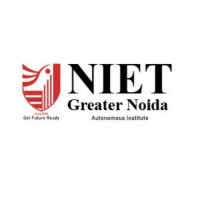Exploring Technology-Based Educational Experiences in B Tech Electronics and Communication Engineering

Strong 8k brings an ultra-HD IPTV experience to your living room and your pocket.
The field of B Tech electronics & communication thrives on constant innovation, and so does its education. Today, learning electronics and communication engineering uses smart technology.
This is because traditional teaching alone cannot meet the demands of a fast-evolving tech world. Today’s students need exposure to hardware-software integration, signal processing, and embedded systems through interactive platforms.
As a result, modern tools are reshaping how B Tech electronics and communication engineering are taught and learned. Colleges are, therefore, integrating immersive technology to foster deeper understanding and application. These tech-based educational experiences are not add-ons but are integral to producing capable, job-ready engineers.
Simulation-based circuit design and real-time testing platforms
Hands-on experience with circuitry is vital in ECE, and simulation platforms offer powerful ways to prototype and test without physical risks. The colleges use analogue and digital circuit simulations with waveform analysis, MOSFET switching behaviour modelling, and FPGA-based virtual tools for Verilog design and testing without burning actual boards.
Also, MATLAB Simulink integration helps in modelling and simulating DSP and control systems, real-time testing via cloud-linked oscilloscopes and logic analysers, and circuit debugging via remote desktop labs with virtual breadboarding and component libraries.
Embedded system training with IoT integration
Building on simulations, ECE education now extends into smart systems through embedded platforms that mimic real-world devices. Different toolkits are bundled into semester-wise lab kits as well as end-to-end IoT project development using cloud platforms.
Moreover, exposure to sensors and actuators for real-time environmental and industrial data acquisition is provided to students. They also become familiar with programming microcontrollers with different wireless modules for networked device communication. They also learn about the deployment of low-power applications using battery optimisation and sleep cycle strategies.
AI and ML applications in communication systems
As communication technology intersects with artificial intelligence, colleges are embedding ML modules into their core ECE curriculum. The use of Python and TensorFlow allows for signal classification and filtering, ML-based channel prediction and equalisation simulations for wireless systems, and integration of natural language processing into speech signal processing labs, which offers practical exposure to neural networks for image/video signal enhancement.
Students are also trained in datasets derived from SDR (Software Defined Radio) platforms and predictive modelling for antenna performance and RF propagation.
SDR, antenna design and 5G testing labs
With telecom moving into 5G and beyond, practical exposure to wireless technology is now a core feature of modern ECE programs. Several SDR-based experimentations using USRP kits and GNU Radio for real-time signal processing are included, and antenna design techniques are taught using HFSS and CST Studio for parametric analysis and optimisation.
5G protocol stack simulations using 5G Toolkits, measurement of S-parameters and gain via Vector Network Analysers (VNAs) in virtual mode, and IoT and LPWAN communication tests using NB-IoT and LTE-M modules along with remote monitoring of RF exposure levels and spectrum usage in urban simulation labs are also taught.
Cloud-based VLSI design and automation tools
The next frontier in chip design and logic synthesis is happening on the cloud, and ECE departments are keeping pace. Colleges are now using educational cloud licenses and offering real-time RTL-to-GDSII flow access via remote login to industry-grade servers.
Additionally, hands-on sessions for layout and verification, AI-assisted placement and routing simulations using EDA smart tools, RTL simulation for HDL logic validation, and collaborative design boards for ASIC design projects with version control and peer review promote the learning experience.
Conclusion
In conclusion, B Tech ECE is no longer about theory-based classrooms. It is about real-time tech immersion, from basic circuits to AI-driven wireless systems. Technology is now at the core of engineering education, where students not only learn better, but it also helps in building, simulating, and optimising faster using digital platforms.
Note: IndiBlogHub features both user-submitted and editorial content. We do not verify third-party contributions. Read our Disclaimer and Privacy Policyfor details.



